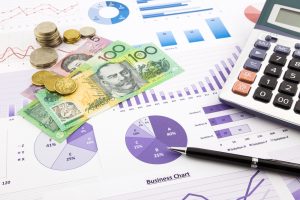 Australia is now regarded as one of the best places to trade CFDs in the world, thanks to how well-regulated the market is and the number of high-quality competitive brokerage firms in the country. CFDs are a relative newcomer to the local market, having only reached these shores just under a decade ago. CFD market makers in Australia have come up with innovative trading and fee solutions, among other things, disrupting the discount brokerage model in the process.
Australia is now regarded as one of the best places to trade CFDs in the world, thanks to how well-regulated the market is and the number of high-quality competitive brokerage firms in the country. CFDs are a relative newcomer to the local market, having only reached these shores just under a decade ago. CFD market makers in Australia have come up with innovative trading and fee solutions, among other things, disrupting the discount brokerage model in the process.
Market makers and brokers fight for CFD dominance
When CFD traders entered the market, standard fees of $20 to $30 were applied. However, this was challenged by innovative CFD providers who set their fees as low as $10 per transaction, attracting scores of retail traders and the investing public alike. CMC Markets and IG Markets were some of the first major players in this CFD space. Not to be outdone, the responding affidavits, as it were, were promptly fired off by the ASX alternative discount share brokers. This served to pique interest in CFDs in Australia.
The state of CFD trading in Australia today
It was the alternative market makers who ultimately came out on top in the CFD boxing ring, due in no small part to ASX-based CFDs being unable to sustain the market. Today, the only mechanism is alternative market makers, and it seems that all traders are satisfied with this. Several firms are facilitating an environment in which clients can trade at globally competitive prices.
What are the most popular local CFD markets today?
The appetite for CFDs has grown exponentially in Australia. CFD trade has swelled by over 400% in less than 10 years. Today, more than 300,000 locals trade CFD instruments, with more signing on every day to learn how to trade CFDs. This surge in popularity is probably down to how flexible and efficient trading instruments are today. The most well-loved CFD instruments are forex, commodities and indices.
As for commodities, taking trading positions on raw and basic commodities with minimal margin and transaction costs remains on an upward trajectory. Interest in commodity trading has swelled as China has risen to prominence as an industrial and economic giant. The recent trade war escalation with the United States has only made things more interesting and has served to underscore this Far Eastern nation’s importance in global commerce. Oil, gold, agriculture, petroleum and more are all enjoying expanded CFD trade.
Foreign currencies are the world’s largest volume of trades happening by asset class, and forex is essentially a type of CFD. It is attractive because it provides liquidity and operates around the clock. From a forex advice point of view, it just so happens that the local currency is an exceptional performer. Just see what a good pair it makes with the Japanese yen, for example.
The world’s top indices, including the Australia 200, help traders diversify by getting exposure to specific national market stock portfolios. These compilations track national markets, so if you can spot and analyze trends, it is a wonderful option.
A developed, well-regulated framework
As a CFD trader today, you can rest assured that the framework and regulatory environment in Australia is solid. In fact, many international investors are now drawn to trading CFDs specifically in Australia. The Australian Securities and Investment Commission (ASIC) has done well to create a safe trading environment. There are several reliable, competitively priced, service-oriented platforms from which to choose. Nevertheless, you should always carry out your own research and read independent, trustworthy broker reviews before opening an account.